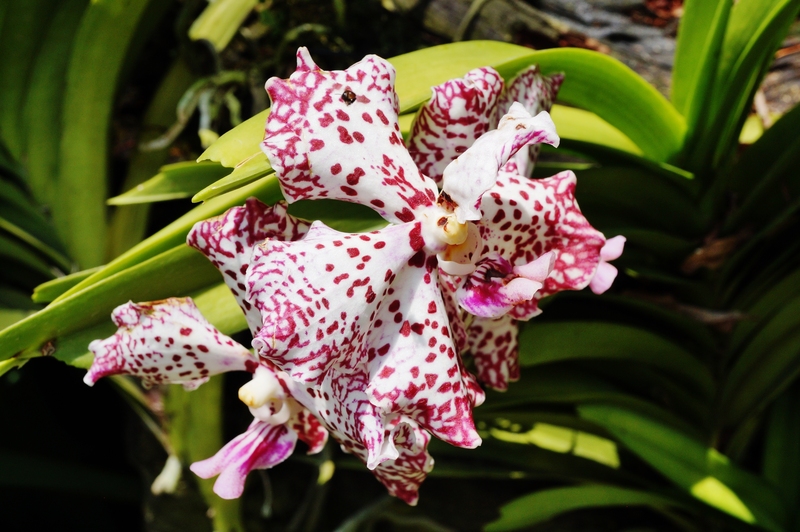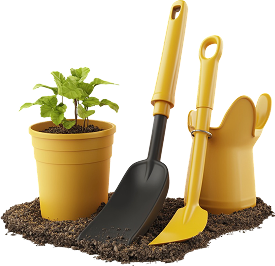Secrets to Keeping Grass Green and Healthy Through Hot, Dry Spells
When summer arrives and temperatures soar, homeowners everywhere face the inevitable battle with their lawns. Hot, dry conditions can turn a lush, vibrant yard into a patchy, brown eyesore seemingly overnight. But did you know that with the right strategies, you can keep grass green and healthy even during the harshest hot and dry spells? In this comprehensive guide, we reveal time-tested secrets and expert tips for maintaining a thriving, verdant lawn all summer long, no matter what the weather brings.
Understanding the Challenges of Hot, Dry Conditions
Before delving into lawn care techniques, it's crucial to understand why grass struggles in prolonged heat and drought. High temperatures cause soil moisture to evaporate rapidly, sometimes faster than you can replenish it. Additionally, the strong sun can scorch grass blades, while reduced rainfall means roots receive less water and nutrients. Grass naturally goes dormant to survive, but with proper care, you can help your lawn avoid or shorten this period.
How Drought Affects Different Grass Types
- Cool-season grasses (like fescue, bluegrass, rye): More prone to browning and dormancy in intense heat.
- Warm-season grasses (such as Bermuda, zoysia, St. Augustine): Better adapted for surviving drought but still need care during prolonged dry spells.
Recognizing your grass species will help tailor your lawn care for the most resilient green-up during hot, dry weather.

Top Watering Techniques for Greener, Healthier Lawns
Water is the lifeblood of any lawn, yet it's also the resource most quickly depleted in droughts. To keep your grass green during summer, you'll need to maximize your watering efficiency.
Water Deeply and Infrequently
- Deep root growth: Watering deeply encourages grass roots to grow downward, seeking moisture. Shallow, frequent watering keeps roots near the surface, making them more vulnerable to heat and drought.
- Recommendation: Water your lawn with about 1 inch of water once a week rather than light daily sprinklings. This may mean running sprinklers for 30-60 minutes, depending on your system and soil.
Water Early in the Morning
- Watering before 9 a.m. reduces evaporation, giving water a chance to soak into the soil where roots need it most.
- If you water in the evening, lingering moisture can promote disease and fungus.
Use Smart Irrigation Systems
- Invest in a sprinkler timer or smart irrigation controller to optimize watering schedules based on local drought conditions and rainfall.
- Check your system regularly for leaks or clogged heads to ensure even coverage.
*Tip: Place empty tuna cans around your yard before watering. When they fill to 1 inch deep, you've watered enough.*
Mowing Strategies to Keep Lawns Green in Dry Heat
Proper mowing is perhaps the most underappreciated secret for keeping lawns green during a drought. It's not just about frequency--it's how you mow.
Keep Grass Taller
- Set your mower high: Longer grass shades roots and soil, reducing evaporation. Aim for 3 to 4 inches for most grasses.
- Never remove more than one-third of the grass blade height at a time to avoid stressing the plant.
Keep Blades Sharp
- Dull blades tear and stress grass, allowing in disease and turning tips brown. Sharpen your mower blade at least twice a season.
Leave Clippings on the Lawn
- Grasscycling returns moisture and nutrients to the soil, helping insulate roots against heat.
Soil Health: The Foundation of a Resilient Green Lawn
The secret to keeping grass healthy during drought often lies beneath the surface. Soil health is fundamental to your lawn's drought resilience.
Aerate Your Lawn
- Compacted soil resists water and makes it tough for roots to grow deep. Aerate your lawn at least once a year (spring or fall) to allow air, water, and nutrients to penetrate the ground.
Amend Soil with Organic Matter
- Add compost, topsoil, or mulched leaves to improve water retention and create a spongy environment for roots.
- Mulch thin grass areas or around trees to slow water evaporation and keep root zones cool.
A healthy soil ecosystem also encourages beneficial organisms like earthworms, which aerate soil naturally.
Test Your Soil Regularly
- Check pH levels and nutrient balance to adjust fertilization and correct deficiencies.
Smart Fertilization for Heat-Hardy Lawns
You might think fertilizing will boost your lawn's growth and color during hot weather, but too much fertilization can actually cause more harm than good during drought.
Choose the Right Fertilizer
- Opt for slow-release organic fertilizers that nourish the grass steadily rather than causing a growth spurt that can stress the plant.
- High-nitrogen fertilizers can burn your lawn in the heat. Apply sparingly and only if your soil test advises it.
When and How to Fertilize
- Spring and fall are best for heavy fertilization. During a drought, it's safer to hold off or use minimal applications.
- Always water thoroughly after fertilizing to prevent root burn.
Drought-Tolerant Grass Varieties for Lasting Green
If your region routinely faces summer droughts, consider transitioning parts of your lawn to drought-tolerant grass species. These options naturally use less water and stay green longer without heavy irrigation.
- Bermuda grass: Thrives on heat and dry weather, ideal for southern climates.
- Zoysia grass: Dense, deep-rooted, and resistant to traffic and drought.
- Buffalograss: A native North American grass that stays green with very little water once established.
- Tall Fescue: Among cool-season grasses, this variety is best suited for drier conditions due to its deep roots.
How to Transition to Drought-Resilient Lawn
- Overseed existing lawns with drought-resistant varieties in the fall or spring.
- For new lawns, select a grass blend tailored to your climate and soil type.
Troubleshooting Common Lawn Problems During Hot, Dry Spells
Despite your best efforts, hot and dry weather may still cause problems. Here's how to identify and deal with them.
Brown Spots vs. Dormancy
- Dormant grass: Uniformly tan or brown, but not brittle, and recovers when rain returns or watering resumes.
- Dead patches: Stay straw-like even after watering, possibly due to disease, pests, or severe dehydration.
Pests and Diseases
- Heat-stressed, dry lawns are more susceptible to insect activity (like grubs or chinch bugs) and fungal diseases.
- Monitor for unusual patches, thinning, or visible bugs. Contact your local extension for proper identification and remedies.
Lawns That Won't Green Up
- Possible culprits: Thatch build-up, compacted soil, or neglecting aeration/fertilization.
- Rake out thatch, aerate compacted areas, and ensure your watering and mowing habits are optimal.
Extra Tips: Efficient Practices for Sustainable Lawns
Beyond the basics, these advanced tactics can help keep your grass green and flourishing, even through relentless summer heat.
- Core aerate in spring or fall to maximize drought tolerance before summer arrives.
- Mulch around garden beds and trees to reduce competition for water.
- Control weeds--they steal scarce moisture from your grass.
- Avoid heavy foot traffic during drought; compacted paths recover more slowly.
- Collect and use rainwater in barrels to supplement irrigation and conserve resources.
- Consider lawn alternatives like clover, native wildflowers, or groundcovers in less-trafficked areas for year-round greenery with minimal watering.
Seasonal Lawn Care Schedule for Drought Survival
Following a year-round routine keeps your lawn resilient and ready to face each new hot, dry spell head-on. Here's a quick seasonal checklist:
Spring
- Aerate and dethatch to prep soil.
- Overseed with quality drought-tolerant grasses.
- Apply balanced, slow-release fertilizer.
- Install or check irrigation systems before high heat hits.
Summer
- Mow high and less frequently.
- Water deeply and early.
- Monitor for insects or disease.
- Pulll weeds before they spread.
Fall
- Aerate compacted areas again.
- Fertilize to replenish nutrients post-stress.
- Overseed thin spots.
Winter
- Clear fallen leaves to avoid fungal buildup.
- Minimize foot traffic on frozen or dormant grass.

Frequently Asked Questions About Keeping Lawn Green During Drought
Can I water my lawn less during a drought?
Yes, reduced watering is often necessary during municipal water restrictions. Deep, infrequent watering during allowed times is best. Lawns can usually survive several weeks of drought by going dormant, then green up with autumn rains.
Will fertilizing help my grass during heat and drought?
Too much fertilizer during high heat can stress or even burn your lawn. Rely on slow-release formulas and fertilize more heavily in spring and fall, not peak summer.
Should I reseed or overseed with special grass types?
If your area regularly experiences drought, consider overseeding with more resilient species as described above. Native and regional varieties tend to require less care and water.
Conclusion: Achieve a Lush Lawn All Summer Long
Keeping your grass green and healthy during hot and dry spells doesn't require constant watering or chemical reliance--it's about smart, sustainable management. By following the expert secrets shared here, you can enjoy a resilient, beautiful green lawn year-round, even in the harshest conditions. Remember: It's the daily habits--wise watering, high mowing, nurturing soil, and tailored fertilization--that set your lawn apart, making it the envy of the neighborhood.
For more expert lawn care tips and seasonal sustainability advice, bookmark this guide. Stay cool, keep watering smart, and watch your grass stay green, healthy, and strong through any summer drought!
